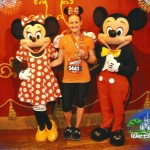Sally Oxley’s dream motivated her to action.
The owner and CEO of HPT Physical Therapy Specialists, located at 2240 5th Ave., said the past 30 years of business — moving, building and expanding — were all a result of how she dreamed the practice of physical therapy could be.
“You have these dreams of how things ought to be, how patients should be treated and the kind of care they should receive,” said Oxley, a physical therapy and certified hand therapist, gesturing at the building around her. “All of this allowed us to make that happen.”
Oxley began her career at a local orthopedics business and made the decision to open her own practice in 1982, in a small 500-square-foot office at the Highlawn Medical Building. Physical therapist Mark Taylor joined her shortly thereafter.
“I wanted the independence of being in private practice, of being able to make decisions and change directions quickly,” Oxley said.
The business grew steadily, adding employees up to a total of 10 therapists by 1992.
“We outgrew that space pretty fast and decided we needed to find someplace bigger,” Oxley said.
That bigger space became the former Danco building located a stone’s throw from the then-newly constructed Marshall University football stadium. It boasted 66,000 square feet that took the business to another level.
“Moving to this building allowed us to do a lot of different things. We were able to expand our sports injury treatment and our industrial rehab business with a warehouse space to mimic the workplace of an injured worker,” Oxley said. “Opening this building expanded our opportunities to advance what we do.”
Today, the practice boasts six therapists and five physical therapy assistants who join a support staff of nearly 15 others.
HPT, also known to the community at Huntington Physical Therapists, is building a new neurological division focused on working with individuals with Parkinson’s disease or those recovering from strokes. They offer a fitness program and open gym/exercise area with workout equipment and treatment tables as well as private treatment rooms. Tennis courts in the back of the business are available and occupied by the Marshall University tennis team during winter months. The facility, which includes 220 off-street parking spots, also features the HIT Center, a high-intensity training center dedicated to personal training and athletic performance. Ohio Valley Physicians has an office upstairs.
Oxley said the practice’s patients, which have numbered 75,000 over three decades, have grown fond of their open-door policy and generational care.
“One thing about us, people just pull up and walk in and ask to be seen. This is just a service we’ve always provided,” Oxley said. “We’re seeing four and five generations of the same family, someone we treated years ago is coming in and bringing their daughter or their granddaughter.
“When someone comes in and says, ‘I saw you 25 years ago,’ that’s a good feeling,” she said.
Oxley’s son, John, now a doctor of physical therapy and a member of the HPT practice since 2006, grew up in the physical therapy environment.
He said his goal is helping his mother grow the practice into the future.
“I want us to be on the cutting edge of orthopedics and outpatient physical therapy, and to do that you have to keep getting, keeping, educating and training the best people out there,” John said.
“I want John to help me continue to take care of this community,” Oxley said. “We’re grateful to this community and the physicians here for have faith enough in us to send patients here and to continue coming here for care.” Clinical director Kevin Burton, who has been with the practice since 1993, said what HPT provides is true “physical” therapy.
“What it’s all about is things like a kid from Paintsville, Ky., who travels 90 minutes here to get physical therapy because of the services we provide,” Burton said. “We really are about ‘physical’ therapy. We want to get people back to whatever they want to get back to so they can enjoy their lives to the fullest.”


